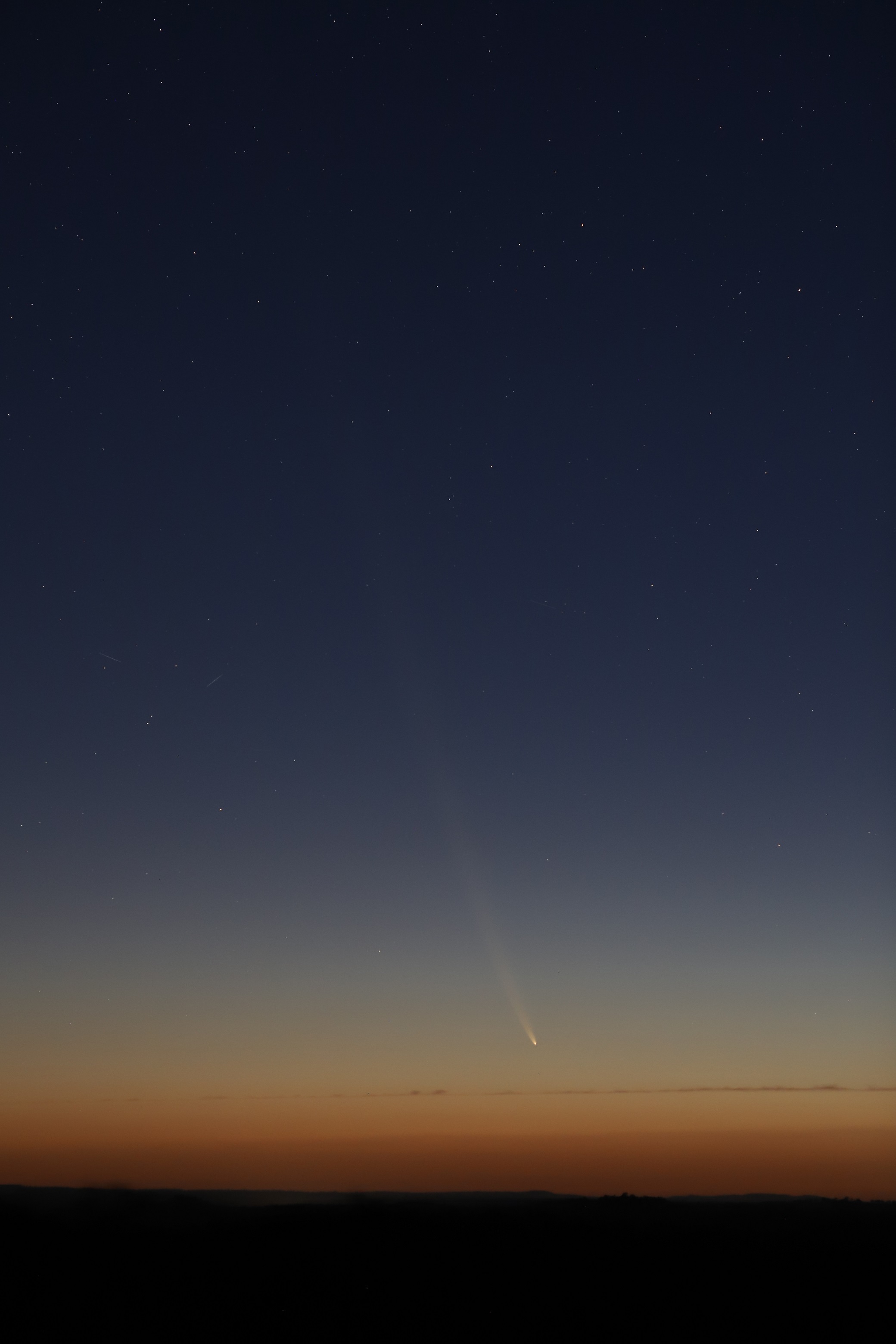Tail not at all obvious to the naked-eye. Even with the head above the horizon murk, it was relatively inconspicuous. If a rough comparison was made with Lovejoy, it would be a couple of orders of magnitude "less obvious", to objectify a subjective impression! In photographs before twilight, the full extent of the tail is at least 22deg. Quite humid again and car headlights below the horizon in the distance often dramatically outshone the comet tail. Only one naked-eye comparison star was used, gamma 1 Leonis (mag 2.2), which was at 4.0 deg altitude, only 0.1 deg higher than the comet head. I'd guess the comet was marginally brighter than this star (perhaps 0.2mag) but locating the comet for comparison was aided by the short tail. Both were difficult to locate. The main difference in the comparison, and this is a dramatic difference, is the brightness of the twilight sector. The head was close to the middle of it, but the star some 30deg to the left. No doubt some sort of compensation could be made but at a completely vague guess perhaps a full mag correction could be made. No such correction was applied in previous days. 2024 Oct 03.781UT mag ~+1 I wouldn't put any of my mags in a database. Apart from being very rusty at making estimates, I don't have any great faith in the reliability of any of the estimates. Image 2024 Oct 03 18:39UT Canon 6D MkII 85mm f/2.8 2.5sec exp ISO 2000 Cheers, Rob Coonabarabran, NSW, Australia |

Page last updated: Tue 30 Sep 21:59:27 BST 2025